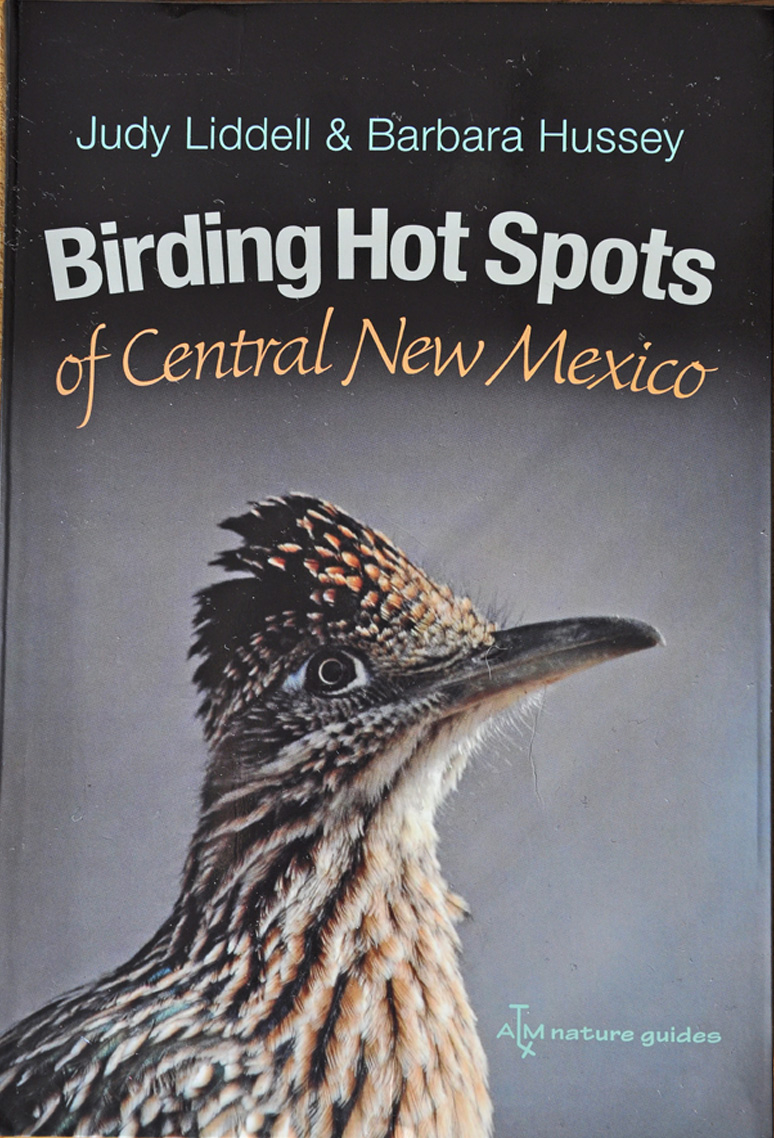
Birders heading for Bosque del Apache National Wildlife Refuge will find Birding Hot Spots of Central New Mexico a handy guide, covering birding areas from just north of Albuquerque south to the refuge, one of the best-known in the country. Authors Judy Liddell and Barbara Hussey offer considerable and well-organized detail, making it easy to plan birding forays in the region. Published by Texas A & M University Press, the guide begins by introducing the area’s geography, life zones and habitats ranging from Chihuahuan desert scrubland to the rocky, spruce-fir-capped crest of the Sandia Mountains.
Chapters 3-8 are organized by sub-regions. Using the junction of I-25 and I-40 as a starting point, the authors describe birding hot spots along the Rio Grande in Albuquerque and Corrales, the Sandia Foothills, the east side of the Sandia Mountains, the Manzanita and Manzano Mountains, Petroglyph National Monument, and the Rio Grande south of Albuquerque.
Habitat descriptions, access points and trails are included for each hot spot, along with maps for nine of them and notes on which are eBird hot spots. Target species are listed with annotations about where and when they are likely to be found. Birders seeking to add southwestern species to their year or life lists will find this particularly useful, heading to the Elena Gallegos Picnic Area for Juniper Titmouse or the Bosque del Apache Visitor Center for Verdins. Other birds likely to be seen are listed with less detail. The Annotated Checklist at the end lists 241 species found regularly in this diverse area and is also useful for birders targeting particular species. Want to catch Ross’s Goose at Bosque del Apache? Don’t arrive before November, and if you go too late in February, your chances will be slimmer.
Birders will find help with planning trips, including tips on weather, altitude, safety, pests and public transportation. For each hot spot, the authors give directions and information on parking, facilities, special considerations and hazards, and the nearest food and gas. The final chapter is devoted to the American Birding Association’s Code of Birding Ethics.
The book’s organization inevitably leads to some redundancy. Harvester ants are numerous in New Mexico, so they get frequent mention as do rattlesnakes. While herp lovers would want to see rattlesnakes listed as target species, the authors appropriately list them with special considerations and hazards.
Although I spent 30 years birding the area covered by this guide, I plan to take it on my next trip to Bosque del Apache.
~ Chuck Hundertmark, RMBO Board Member
Chuck Hundertmark serves on RMBO’s board of directors. Before moving to Colorado in 1997, he spent 30 years in New Mexico where he served as president of the New Mexico Ornithological Society and Central New Mexico Audubon Society and was the founder of Rio Grande Bird Research Inc., a nonprofit conducting banding programs.







